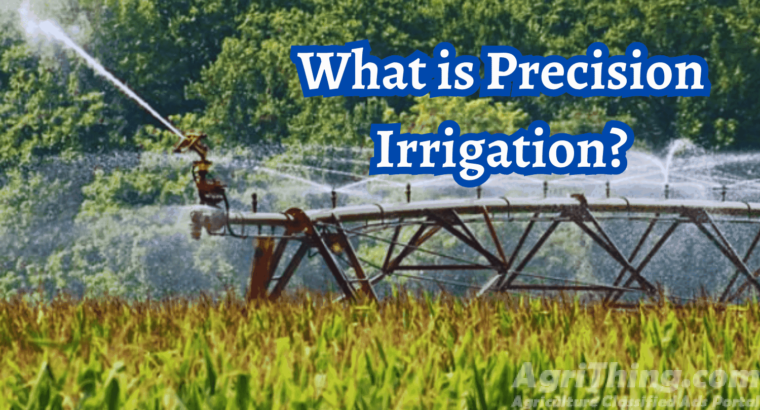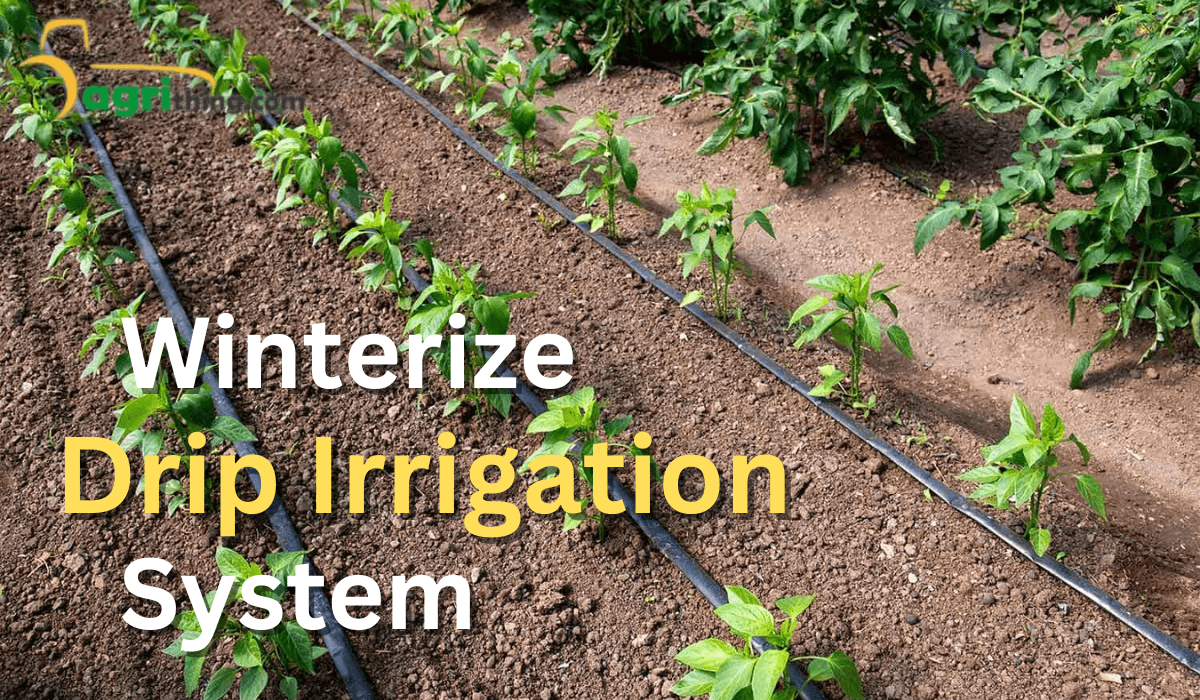This precision irrigation helps your plants growth
Precision irrigation is a cool way to water plants smartly and carefully. It sends water to the roots, avoiding waste and making plants happy. But sometimes, drip irrigation can face problems that make it less effective. This article discusses these common issues and gives some simple steps to fix them.
Introduction
Precision irrigation, also known as Drip irrigation, is like a special water system for plants. It uses tiny tubes or hoses with little water droppers near the roots of the plants. These droppers release water slowly and carefully, letting it soak into the soil where the plants need it. This way, it saves water, stops pesky weeds from growing, and helps the plants grow big and strong.
Table of Contents
Common Issues in Drip Irrigation
Clogged Emitters:
Blocked holes are a big problem in Precision irrigation. Tiny bits of dirt, leaves, or hard stuff can clog up the little openings in the water sprayers. The water can’t come out or drips out very slowly when that happens.
Uneven Water Distribution:
Uneven water distribution can occur if there are variations in water pressure or if some emitters are clogged. This can result in excessive watering in certain areas while causing insufficient watering in others.
Pressure Problems:
Low or very strong water pressure can make Precision irrigation systems useless. If the pressure is too low, not enough water will come out. If the pressure is too high, it can break the water drippers or make them leak.
System Leaks
System Leaks can occur in Precision irrigation systems due to damaged tubing, loose connections, or faulty fittings. Leaks waste water and can also lead to reduced system efficiency.
Root Intrusion:
Plant roots may intrude into the tubing or emitters, causing back-ups or damage to the system. This can be a common issue in older systems or when plants are not adequately spaced.

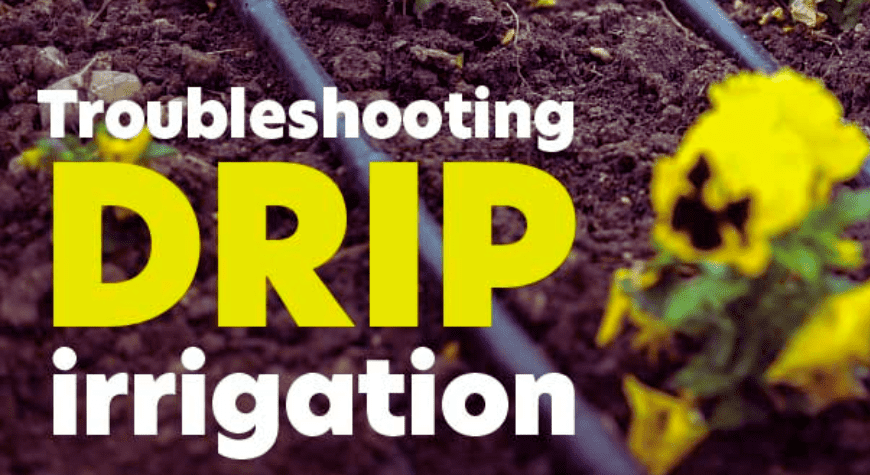
Troubleshooting Steps for Common Issues
Identifying clogged emitters:
Inspect the emitters regularly for signs of clogging, such as reduced water flow or uneven distribution.
Clearing clogged emitters:
Remove them and soak them in a mild cleaning solution or vinegar to dissolve any deposits. Use a small brush or pin to clear any remaining blockages.
Ensuring even water distribution:
Check the water pressure at different points in the system using a pressure gauge. Adjust the flow regulators or install pressure-compensating emitters to ensure uniform water distribution.
Adjusting water pressure:
Install a pressure regulator to maintain optimal water pressure within the recommended range for your specific system. This helps prevent damage to the emitters and ensures efficient water delivery.
Fixing system leaks:
Inspect the system for leaks and repair any damaged tubing or fittings. Use proper connectors and secure all connections tightly to prevent leaks.
Prevent root intrusion:
To stop plant roots from getting into the system, you can put up special barriers or use tubes that don’t let roots in. Keep an eye on the area around the tubes to see if any roots are sneaking in, and if you find any, take action to fix the problem.
Troubleshooting problems and their solutions
Here’s a table outlining common problems in Precision irrigation systems and their solutions:
| Problem | Solution |
|---|---|
| Clogged Emitters | Remove clogged emitters and clean them thoroughly. Install a filter or a screen at the water source to prevent debris from entering the system. Use chemical cleaners or vinegar to dissolve mineral deposits. |
| Uneven Water Distribution | Check for any leaks or damaged tubing and repair or replace them. Ensure that the water pressure is consistent throughout the system. Adjust the flow rate or use pressure-compensating emitters to achieve uniform distribution. |
| Low Water Pressure | Check for any obstructions or kinks in the tubing and remove them. Increase the diameter of the mainline or reduce the length of the tubing to improve pressure. Clean or replace clogged filters and pressure regulators. |
| High Water Pressure | Install a pressure regulator to reduce the water pressure to the recommended range. Inspect and repair any leaks or damaged components caused by excessive pressure. Use pressure-compensating emitters to maintain consistent flow rates. |
| System Leakage | Inspect all connections and fittings for leaks and tighten or replace them as necessary. Check for cracks or damage in the tubing and repair or replace affected sections. Ensure that the system is properly flushed and drained during winter or periods of inactivity. |
Additional Tips for Effective Precision irrigation
Regular System Maintenance:
To keep your Precision irrigation system working well for a long time and ensure it works efficiently, you need to do a few important things. First, clean the filters regularly. This helps remove any dirt or debris that might clog the system. Second, wash the system now and then. Flushing means you let water flow through all the pipes and emitters to clean them out. And finally, check for any damage or signs of wear.
Using Proper Filtration:
Install filters to remove waste and residue from the water supply. This prevents the clogging of emitters and ensures the uninterrupted flow of water.
Choosing the Right Emitters:
Select emitters suitable for your garden’s specific plants and soil conditions. Different plants may require different emitter types or flow rates.
Managing Water Quality:
Using clean water for your drip irrigation system is important. That means water without a lot of dirt or chemicals in it. If the water has too much of those things, it can cause problems for the system. It can get plugged up and even get damaged. So, make sure the water you use is good and clean. If unsure, you can use a special system to treat and improve the water for your plants.
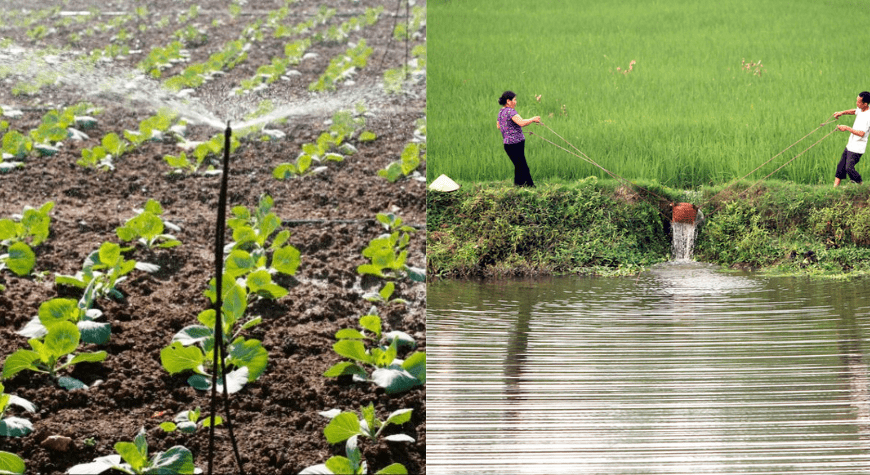
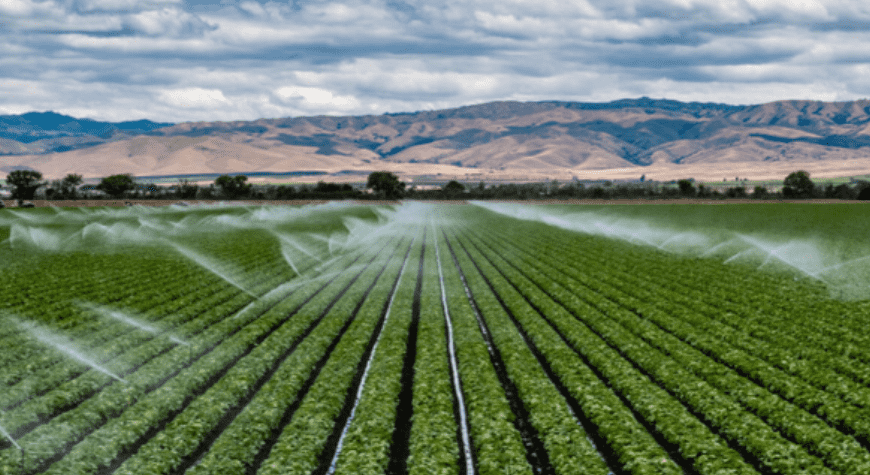
Troubleshooting Analysis: Precision irrigation vs. Traditional Irrigation
Drip and traditional irrigation methods are commonly used to water plants and crops. While traditional irrigation involves flooding or spraying water over a large area, Precision irrigation delivers water directly to the roots of plants through a network of tubes or pipes with small emitters. Here’s a troubleshooting analysis comparing the two methods:
Water Efficiency:
Drip Irrigation:
Drip irrigation systems are highly efficient in water usage. They deliver water directly to the plant’s root zone, minimizing water loss due to evaporation or runoff.
Traditional Irrigation:
The old way of watering plants can waste a lot of water. When we use traditional methods, like sprinklers, the water can disappear because of the sun or wind or run away on the ground. This means the plants might not get enough water, and it’s not used efficiently. But there’s a better way! With new methods like drip irrigation, we can give water directly to the roots so the plants get what they need. It saves water and helps the plants grow better too!
Precise Water Delivery:
Drip Irrigation:
Drip systems deliver precise water to individual plants, allowing customization based on specific water requirements. This accuracy reduces water wastage and ensures plants receive the right amount.
Traditional Irrigation:
Using traditional methods to water plants can sometimes cause problems. The water may not be spread evenly, which means some areas get too much water and others don’t get enough. This cannot be good for the plants because they might get too wet or dry. It can even make the soil wash away or erode. So, it is important to find a better way to water the plants and ensure they all get the right amount of water to stay healthy.
Weed Control:
Drip Irrigation:
Drip systems minimize water exposure to non-cultivated areas by delivering water directly to plant roots, reducing weed growth. The controlled water application limits moisture availability for weed germination and growth.
Traditional Irrigation:
Traditional methods may increase weed growth due to excessive water spread throughout the field. Weeds compete with crops for resources, adversely affecting plant growth and yield.
Labor and Maintenance:
Drip Irrigation:
Drip systems require regular maintenance to ensure emitters function correctly and prevent clogging. However, once properly installed, they require less manual labor for watering, as the system can be automated.
Traditional Irrigation:
Traditional methods often demand more labor-intensive tasks, such as setting up sprinklers, moving hoses, or managing flood irrigation. Manual labor is required for proper water distribution and monitoring.
Initial Investment:
Drip Irrigation:
Drip systems generally involve higher upfront costs due to the need for materials like tubing, emitters, and filtration systems. However, the long-term water savings and increased crop productivity can offset this initial investment.
Traditional Irrigation:
Traditional methods often have lower initial costs since they primarily rely on basic equipment like sprinklers, hoses, and pumps. However, the higher water consumption and potential yield loss may lead to increased costs in the long run.
Tips to Avoid Precision irrigation Troubleshooting
Plan Your System Properly:
Before installing a Precision irrigation system, plan the layout and design carefully. Consider factors such as the type of plants, water requirements, soil type, and slope of the land. A well-planned system reduces the chances of issues arising later.
Use Quality Components:
Invest in high-quality Precision irrigation components, including pipes, emitters, filters, and pressure regulators. Cheap or substandard components are more likely to malfunction or clog, leading to troubleshooting.
Install Filters and Pressure Regulators:
Install appropriate filters and pressure regulators in your system. Filters prevent debris from clogging the emitters, while pressure regulators maintain consistent water pressure throughout the system. Proper filtration and pressure control help prevent common issues like clogging and uneven water distribution.
Regularly Inspect and Clean:
Conduct routine Precision irrigation system inspections to identify potential problems.
Check for leaks, clogs, or damaged components.
Clean the filters regularly to remove accumulated debris that could block the water flow.
Monitor Water Pressure:
Keep an eye on the water pressure within your system. High pressure can lead to emitter blowouts or leaks, while low pressure can result in inadequate water distribution. Install pressure gauges to monitor and adjust the pressure as needed.
Adjust Emitter Spacing:
Ensure proper emitter spacing based on the water requirements of your plants. Inadequate spacing can lead to over or under-watering. Follow manufacturer guidelines or consult experts to determine the appropriate spacing for your specific plants.
Mulch and Maintain Soil Moisture:
Apply mulch around the plants to conserve soil moisture and minimize evaporation. Mulching helps maintain a more stable moisture level, reducing the reliance on irrigation and minimizing the risk of issues caused by dry or waterlogged soil.
Regularly Check Emitters and Drippers:
Inspect the emitters and drippers periodically to ensure they work properly. Clean or replace any clogged or malfunctioning emitters promptly.
Schedule Irrigation Appropriately:
Set a watering schedule based on the water requirements of your plants, weather conditions, and soil moisture levels.
Avoid overwatering, as it can lead to root rot and other problems.
Consider using smart irrigation controllers that adjust watering based on real-time weather data.
Keep Records and Observe Plant Health:
Maintain a record of your irrigation activities and observe the health of your plants. This will help you identify any patterns or issues that may require troubleshooting. Address any problems promptly to prevent further damage.
Conclusion
Precision irrigation is a great way to give water directly to the plants’ roots. It helps them grow strong and healthy while saving water too. Sometimes, there can be a few problems, like water getting stuck in the tubes, going to some plants more than others, or even leaks in the system. But don’t worry! You can fix these issues by checking the system and ensuring everything works well. Regularly taking care of the system, using the right filters and choosing the right parts for the water will help keep your Precision irrigation setup working perfectly.
Frequently Asked Questions (FAQ’s)
Q: How often should I check my Precision irrigation system for issues?
It is recommended to check your Precision irrigation system at least once a month to promptly identify and address any potential issues.
Q: Can I use chemicals or bleach to clean clogged emitters?
No, using chemicals or bleach to clean clogged emitters is not recommended, as they can damage the emitters. Mild cleaning solutions or vinegar are safer options
Q: How can I prevent root intrusion in my drip irrigation system?
Installing root barriers or using root-resistant tubing can help prevent roots from entering the system. Regular monitoring and taking prompt action can also prevent root intrusion.
Q: Should I use the same emitter type for all my plants?
Different plants have different water requirements. It is advisable to choose emitter types or flow rates based on the specific water needs of your plants.
Q: Can I automate my drip irrigation system?
You can automate your drip irrigation system using timers or controllers. This allows for convenient scheduling and efficient water management.
Related Articles
looking to purchase a Drip irrigation accessories? Visit our Agricomplex website. Easy and helpful information just for you!
People also Asked
How do I fix a clogged emitter?
A thin wire or needle gently clears the blockage to fix a clogged emitter.
Why is my drip irrigation system leaking?
Your drip irrigation system may leak due to damaged or worn-out connectors or fittings.
What can cause low water pressure in a Precision irrigation system?
Clogged filters, insufficient water supply, or a malfunctioning pressure regulator can cause low water pressure in a Precision irrigation system.
How often should I water my plants with drip irrigation?
The frequency of watering plants with drip irrigation depends on factors such as plant type, soil conditions, and climate, but typically, watering once or twice a week is common.
How do I prevent root intrusion in a drip irrigation system?
To prevent root intrusion in a drip irrigation system, consider using root barriers or applying periodic root treatments to inhibit root growth near the system.

